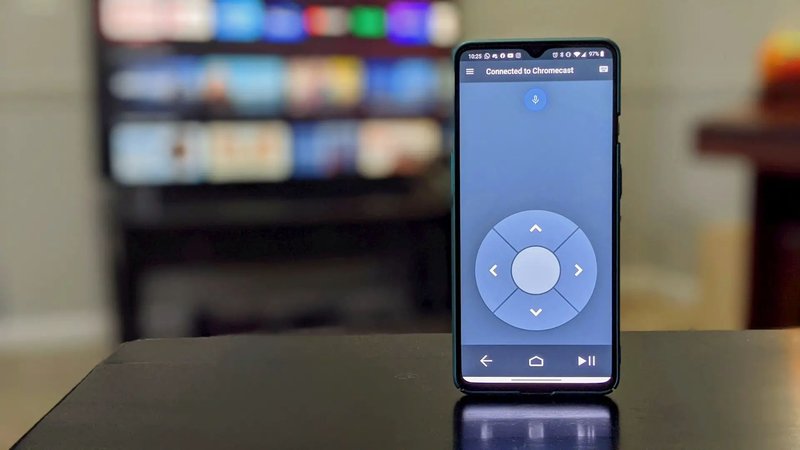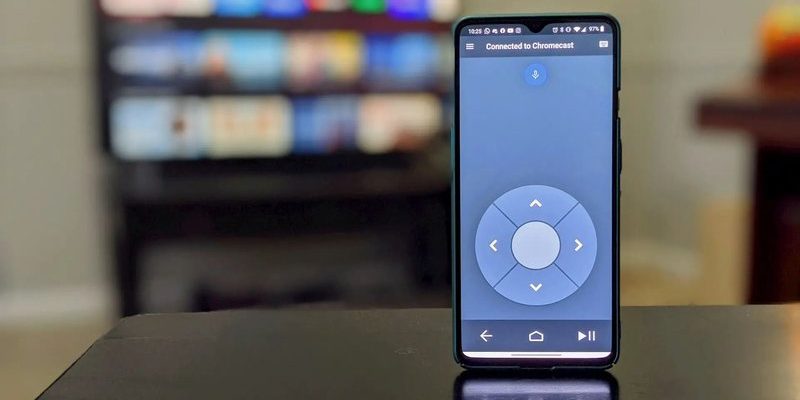
Picture this: You’re at a friend’s house, and everyone’s settled in with popcorn. Suddenly, the Chromecast remote needs re-pairing. Panic? Nope! With the right steps, you can sync it up in minutes—no code sheets, no ancient manuals, no tears. If you’re working with the official Chromecast Voice Remote, or even a compatible universal remote, the setup is more like following a friendly GPS than hacking into Fort Knox.
Let’s explore the *real* way to program a Chromecast remote **without entering a code**. I’ll talk you through exactly how the “no code” pairing works, where folks get tripped up, and what to do if things go sideways. Whether you’re troubleshooting, setting up from scratch, or just tired of juggling remotes, you’re in the right place.
How Chromecast Remotes Sync Without Manual Codes
Here’s the thing: Most people expect remote setup to feel like rocket science, but Google designed the Chromecast Voice Remote to be almost plug-and-play. When you first unpack that slim, pebble-shaped remote, it’s already halfway married to your Chromecast device. So, what happens behind the scenes?
Instead of asking for a code, the Chromecast uses a *Bluetooth and IR pairing* process. The remote and the streaming device find each other, kind of like two friends recognizing each other at a party. You get prompted on your TV screen, and the pairing handshake happens—with zero code entry required. It’s a bit like a self-introducing robot butler: “Hi, I’m your Chromecast remote. Let’s be friends!”
What’s cool? During setup, Chromecast will automatically try to detect your TV model (if you’re connecting to the TV’s HDMI port). It attempts to program functions like power and volume using its built-in database. If it gets it right on the first try, you’re done! If it misses, you’re led through a super-simple on-screen process to test signals—still without typing in any arcane numbers.
This “no code” magic works because Chromecast maintains an updated list of TV brands and the right signals to use. It means you don’t need to hunt for code sheets or get stuck with a remote that only half-works. The experience is terrifically beginner-friendly and honestly makes those old universal programmable remotes look like dinosaurs.
Step-by-Step: Pairing Your Chromecast Remote (No Codes Needed!)
Let me explain how to *actually* sync the Chromecast Voice Remote, step by step. This method is for the official Google Chromecast remote, but similar logic applies to some brand-compatible universals.
- Connect Chromecast and turn on your TV. Plug the Chromecast into your TV’s HDMI port and power it up. Make sure your TV is set to the right input.
- Insert batteries into the remote. This sounds silly, but new remotes ship with a handy pair of AAA batteries. Pop those in, and the remote should wake up automatically.
- Wait for the on-screen prompt. If your remote is unpaired or you’re setting up for the first time, you’ll see a message on your TV: “Start pairing your remote.”
- Hold down the “Back” and “Home” buttons. Press and hold these together until you see the light on the remote start pulsing. This signals pairing mode.
- Follow the on-screen instructions. Chromecast will search for the remote—this usually takes just a few seconds. When it finds the remote, it’ll confirm on the screen.
- Test remote functions like volume and power. Chromecast will ask you to try those features. If they work, awesome! If not, it’ll walk you through a couple brand-specific tries. Still—no code entry required.
Honestly, the process is as easy as following GPS directions. Folks usually trip up only if batteries are dead, or there’s something blocking the signal. If you’re not seeing any response, try resetting the remote (more on that soon).
Troubleshooting: When Chromecast Remote Won’t Pair Automatically
You might be wondering: What if I follow the steps, but my Chromecast remote just refuses to sync or control my TV’s volume? Don’t worry—everyone hits a roadblock now and then. Most common issues boil down to a few simple things.
First—**batteries**. Yes, really. Dead or weak batteries will make a remote behave like it’s haunted. Always try a fresh pair. Next, make sure there’s a clear line between your remote and the Chromecast device during setup, especially if you’re using IR for TV controls.
If you’re still stuck, reset both the remote and the Chromecast device. For the remote, remove the batteries, press any button to drain remaining power, and pop the batteries back in. For the Chromecast, unplug it from power for about 30 seconds and then plug it back in—kind of like giving it a quick nap.
During troubleshooting, you’ll see prompts on the TV. If you get a message like “Couldn’t connect to Chromecast,” try re-entering pairing mode (Back + Home buttons). If the remote *still* refuses to play nice, it may be time to check if it’s a hardware fault—or try pairing from the Google Home app, which has its own troubleshooting options.
Sometimes, all it takes is a simple reset to get things working again. Don’t underestimate the power of the classic “turn it off and back on.”
How the Chromecast Remote Controls Both Streaming and TV Functions
Here’s a small detail folks often miss: The Chromecast Voice Remote doesn’t just talk to your Chromecast streaming device. It also controls your TV’s power and volume using infrared (IR) signals, *not* Bluetooth.
Picture the process as your Chromecast remote wearing two hats: One for talking smartly with the Chromecast (via Bluetooth), and one for commanding your TV’s basic functions (via IR, just like a regular remote). So even if the Chromecast device is hidden behind your TV, your remote can still control volume—as long as you’re pointing it toward the TV.
This double-duty setup is why you can be lounging on the couch and only need a single remote. No more juggling a pile of controllers or crawling around searching for the right one—Chromecast’s remote is small, friendly, and learns the right code for your TV automatically via its database. If, for some reason, your TV is more exotic or ancient, Chromecast might walk you through a quick IR test—again, no manual code entry is ever needed.
Universal Remotes vs Chromecast Official Remote: Pros and Cons
It’s tempting to wonder if you could use a universal remote instead. Honestly, a lot of folks have those cluttering their living rooms. But here’s the difference: Universal remotes (the kind you buy for a few bucks at big box stores) *usually* require you to enter a code for your device—sometimes by holding a button and typing in a five-digit number for your TV’s brand.
The **Chromecast Voice Remote**, on the other hand, is designed for seamless, code-free setup. It’s built specifically for Google TV, gets regular updates, and handles pairing and TV signal learning quietly in the background. You can use some universal remotes with Chromecast, but you’ll likely lose quick access to the Google Assistant button, and some controls might not sync up fully.
- Universal Remote Pros: Great if you want to control a DVD player, soundbar, ancient VCR, and TV all from one controller. Handy for folks with older hardware.
- Universal Remote Cons: Requires manual code entry, feels clunky, sometimes loses sync, and usually can’t access Google-specific features like voice search.
- Chromecast Remote Pros: Automatic pairing, code-free setup, dedicated Google Assistant, and updates directly from Google.
- Chromecast Remote Cons: Only designed for connected Google streaming devices and basic TV controls—not your home theater system or cable box.
Honestly, for most streaming setups today, sticking with the official remote keeps things simple and smooth.
Resetting Chromecast Remote: When to Do It and What to Expect
Sometimes, no matter how many times you press the right buttons, your Chromecast remote just won’t cooperate. Maybe buttons are laggy, or the pairing keeps failing. This is when a reset can save the day.
Resetting your Chromecast Voice Remote wipes any previous Bluetooth connections and lets you start from scratch. To do it, **hold down the Back and Home buttons for about 25 seconds**. You’ll see the LED start blinking, then turn solid. That’s the sign you’re officially back to “factory fresh” mode.
After resetting, you’ll need to start the pairing steps again, just like you’re setting up for the first time. This is usually enough to fix weird sync issues, stubborn volume controls, or mysterious “not working” buttons. Worst-case scenario? Swapping out the batteries or even replacing the remote if it’s truly dead.
Remember, a reset won’t erase your Chromecast device or your streaming apps—it just reboots the remote. It’s like giving your clicker a clean slate and a pep talk.
Programming Chromecast Remotes for Different TV Brands
One of the slickest features of the Chromecast remote setup is its ability to identify what kind of TV you have and automatically program itself for it. During setup, Chromecast uses HDMI-CEC (Consumer Electronics Control) to gather info about your TV’s brand and model. It’s like the remote’s trying to introduce itself at a party: “Hey, are you a Samsung? A Sony? A TCL?”
If the automatic process nails it, your remote will handle power and volume just fine out of the box. But if you have a lesser-known brand or an old TV, Chromecast might offer to “test” a few signals. You’ll tap the volume button as prompted; once it works, you’re all set. Still, no code entry needed—the Chromecast system handles it in the background.
If you ever switch TVs, just go into the Chromecast’s settings, look for “Remotes and Accessories,” and run the setup again for your new screen. Easy as pie!
Battery Tips and Long-Term Remote Care
Let’s not ignore the basics: even the fanciest streaming remote is just a chunk of plastic and circuits unless it’s getting good power. The Chromecast Voice Remote uses regular AAA batteries, which last several months for most folks. If you notice delayed response, laggy volume, or the remote disconnecting, swap the batteries first. It’s amazing how many “broken” remotes are just tired.
If you’re storing your remote for a while, take the batteries out—old batteries can leak and ruin the inside. And if you have sticky buttons (kids and snacks, right?), wipe it down with a barely damp cloth. Treat your remote kindly, and it’ll outlast the TV itself.
Also, the Chromecast remote will occasionally update its firmware in the background, improving features and compatibility. So, if you see things behaving differently after a while, that’s probably just Google fine-tuning things on your behalf.
Closing Thoughts: Why Code-Free Setup Makes Streaming Life Easier
Programming a Chromecast streaming remote without code entry genuinely feels like magic compared to the old ways. No squinting at microscopic numbers in a manual, no cryptic steps that leave you guessing. It’s all about letting the tech do the heavy lifting—and honestly, that’s a relief.
If you ever run into trouble, take it slow. Check your batteries, reset if needed, and let the Chromecast guide you on-screen. Most roadblocks are tiny bumps, not brick walls. And if you’re ever tempted by universal remotes, just remember: Convenience is king, and the official Voice Remote is queen.
So next time your Chromecast remote goes rogue, don’t panic. You’re armed with every trick you need—no secret codes required. Happy streaming!
